
Complex startup frameworks
In this category, we’ve gathered frameworks that:
- Help a startup to think through the future business and its main aspects comprehensively.
- Offer a general approach to the business and product building.
- Provide a clear management strategy for startups.
Lean Startup Framework
Eric Ries presented the Lean Startup Framework in 2011. The concept uses the ideas of Eric’s university teacher Steve Blank (author of the Customer Development Approach), and the works of Osterwalder and Pigneur (authors of the Business Model Canvas).
Eric claimed that the only way to reduce risks connected with new product development is to focus on the users’ pains and constant feedback from them. He introduced the Lean Startup Framework as a tool to create products while maintaining a continuous connection with the real world and its needs.
In his book, Eric explained the fundamental idea of the Lean Startup. A Lean Startup team should identify the value a product will provide to users, minimize waste, and innovate every step of the way.
If you’re not familiar with the concept of lean methodology or what it means for SaaS product management, feel free to refer to our guides.
Also, the book explains the main activity of the Lean Startup – a Build-Measure-Learn feedback loop that a team should repeat over and over again. During the Build stage, a team turns ideas into products (usually with a minimalistic set of features). At the Measure stage, the team introduces the product to the target audience and collects metrics about its performance. Later, they analyze collected metrics (Learn), choosing whether to pivot or persevere with the product concept. The gained knowledge is the base for the next loop cycle.
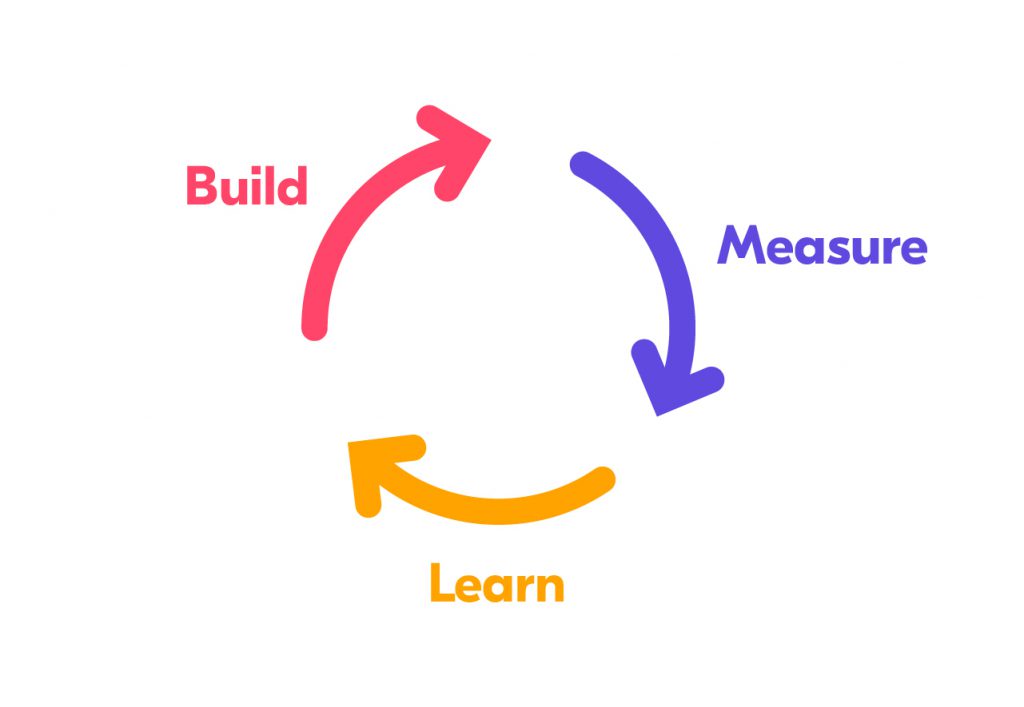
To efficiently implement this loop, the Lean Startup Framework offers a bunch of activities, tools, and principles. We discuss them in detail in our post “Lean Software Development.”
The outcome of using this framework can be a product that users like (because they participated in its creation), but that is nothing like an original idea.
Operational Excellence Startup (OpEx)
Joseph Juran first introduced the concept of Operational Excellence in the 1970s. Joseph taught Japanese business leaders to improve product quality while decreasing their costs. The idea of the approach was to build a culture of excellence on all levels of an organization using various tools, approaches, and models. Among the fundamental principles of Juran’s concept were:
- Encouraging employees to improve the flow of value to a customer.
- Always know where an organization is heading and improve along the way.
- Embrace quality as a great customer experience.
In 2020, Jiju Antony, Alexandre Torres, Marcelo Fernandes, and Willem Salentijn published their work “OpEx startup as an alternative to the Lean startup method.” The authors analyzed the strengths and weaknesses of the Lean approach to building startups and offered to use the OpEx principles in the Build-Measure-Learn loop.
According to this new approach, during the Build stage, a startup should refuse the “good-enough-to-move-on” principle and focus on quality from the very beginning.
The Lean Startup Framework teaches us to Measure a product’s performance when it gets to the users’ hands. The OpEx startup, in contrast, refers to the high cost of the quality problem at the post-release stage. Instead, it suggests testing the quality of a product before it gets to the market.
As for the Learn stage, the OpEx startup framework recommends ignoring customers’ feedback that is often too personal and biased and using a failure mode and effects analysis instead (a tool to review processes to detect potential failures and evaluate their maximal impact).
The approach aims to keep the initial product idea and improve it in all possible matters.
McKinsey 7S Framework for startups
In the 1980s, Robert Waterman and Tom Peters from the McKinsey & Company consulting firm introduced their 7S framework.
Initially, companies used this management model to understand if an organization is set up in a way that allows it to reach its main objectives. In case it wasn’t, the framework helped create an actionable plan. Nowadays, startups can also use the framework to build an effective management system for future companies.
According to the framework, there are seven main aspects in any organization that should be balanced to let a company gain its maximal potential.
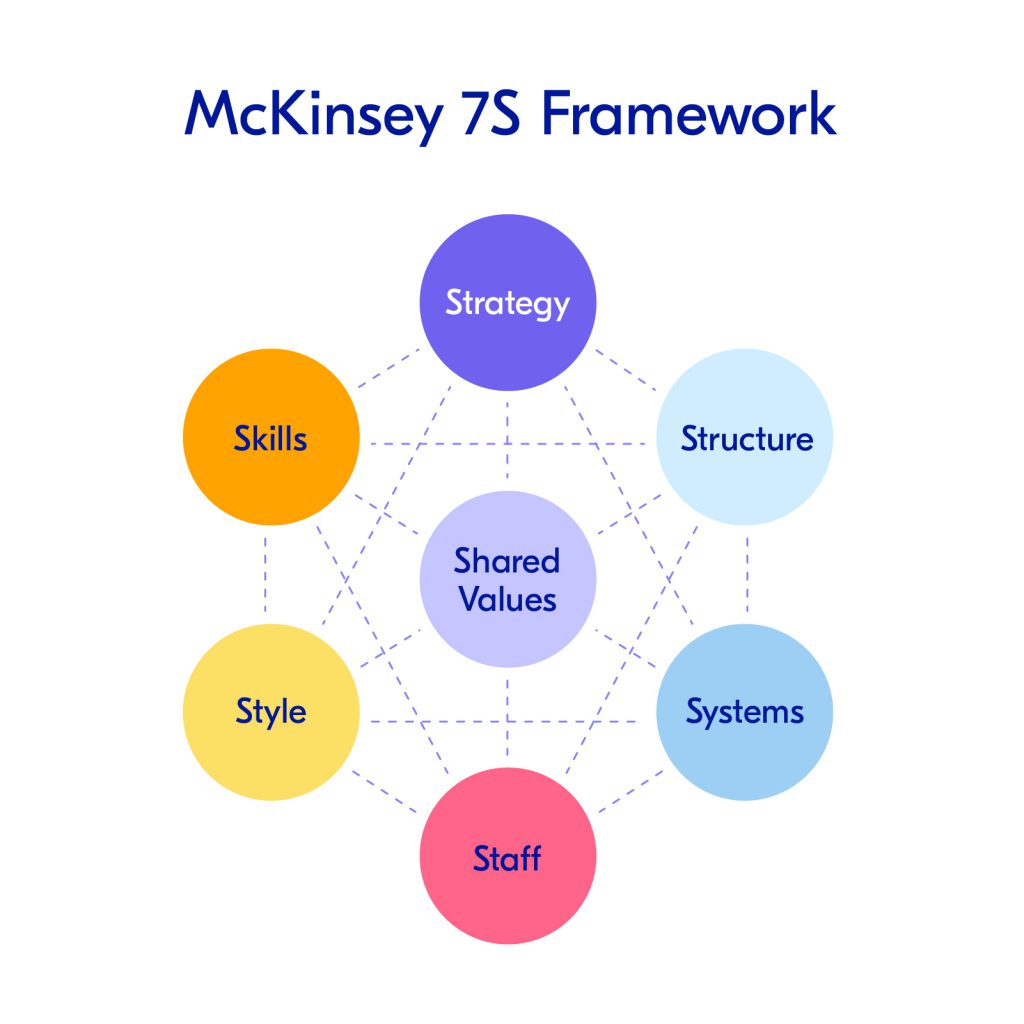
All these aspects are interconnected, and a change in one area causes implications in all others. The Shared Values element is at the core of everything, as it binds the whole organization together. Here’s what each element means.
- Strategy – Understanding the company’s unfair advantage that would allow it to beat the competition.
- Structure – A clear scheme of how a company allocates its resources.
- Systems – Main processes, activities, and tools an organization uses to achieve its objectives.
- Style – The way things are done in a company
- Staff – Available talents and talents that need to be attracted.
- Skills – Understanding the competencies required to achieve the goals, determining available strong competencies, and competencies to be outsourced.
- Shared values – Core values a company needs to reinforce to achieve primary goals.
To use the 7S framework, an organization should start with evaluating the main seven aspects. This process usually takes some time and requires in-depth research. Then, the team models the desired situation and creates a plan on how to get there in each aspect. After executing the action plan, an organization should set new goals and review the scheme.
The undisputed advantage that the framework provides is that it shows the consequences of even slight changes to the rest of the system. As for disadvantages, the framework is meant to analyze only the inner forces within the organization and doesn’t take any external conditions into account.
Product-Market Fit
The framework introduced by Dan Olsen was designed to help startups reach product-market fit (a magical place every startup wants to get, almost like Valhalla😉). If a company hits product-market fit, it means that its users buy, use, and spread the word about it to the extent that these activities sustain the company’s growth and profitability.
Dan Olsen offered a model that consists of five layers. When passing these layers one by one, you can tune the product to the modern market needs, improve its value proposition, and get a better market share.
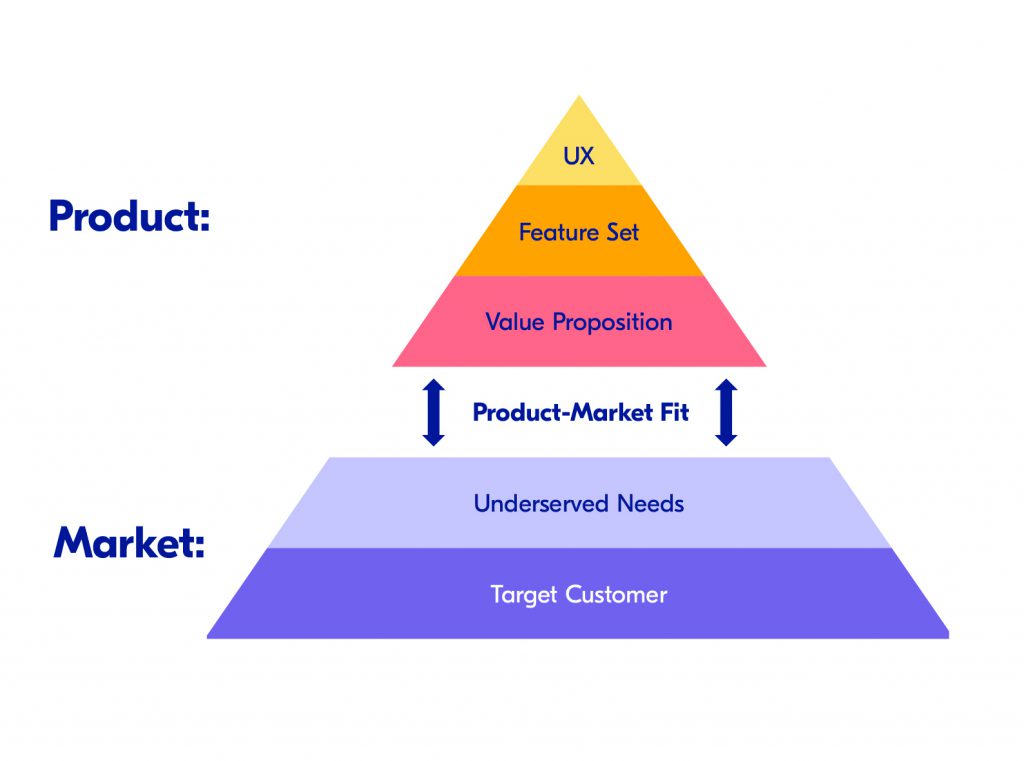
The first two layers (Target Customers and Underserved Needs) are external aspects you can research but can’t influence. The Value Proposition (VP), Feature set, and UX are the inner aspects you should work on using the data from the first two layers.
Mr. Olsen suggested using his model from bottom to top. First, you identify your target audience and determine their underserved needs. Then, you shape your Value Proposition that should answer the question “how are we going to be better than all the products out there?” The last steps include forming a list of features to deliver the VP and creating the UX part to let users interact with that VP.
When all these steps are completed, you can see how well your product decisions resonate with the market you’re going after.

Startup idea finding and shaping frameworks
We consider the frameworks that help startups at the very beginning of their path in this category.
BRIDGeS
BRIDGeS is a product discovery framework created by Railsware. Our team has been testing dozens of tools to comprehensively analyze the multilayer context of a problem that lays a foundation for future products. None of the existing instruments allowed us to do it fast and efficiently. When designing the BRIDGeS framework, we wanted to create a tool to evaluate a problem and think through the optimal solution while detecting unobvious pitfalls and hidden opportunities.
BRIDGeS is an abbreviation for the descriptors we use to analyze the problem (Benefits, Risks, Domain knowledge, Goals) and the Solution that is a result of the analysis. The framework utilizes colored cards of different sizes and shapes to add visual clarity and simplify the perception of the complex context. For the same reason, we use two spaces (Problem space and Solution space) which are basically a board divided into two halves.
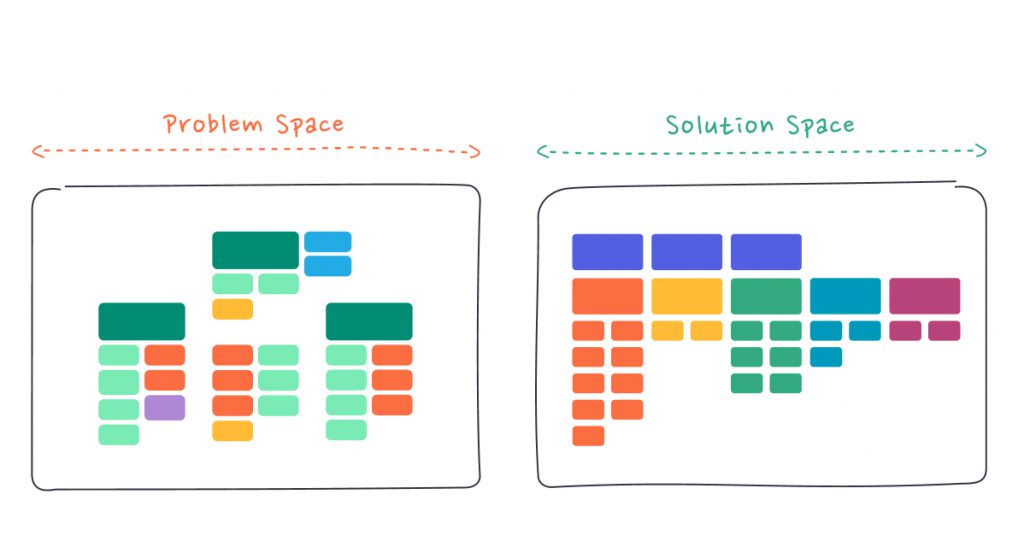
In the Problem space, a team defines Subjects (anyone or anything that would benefit from problem-solving) and analyzes the problem from the Subjects’ perspective. All the data is recorded on corresponding cards and then prioritized.
In the Solution space, a team considers potential solutions (we call them Solution Variations) and chooses the optimal one. Then a preferred solution is decomposed into epics and tasks that form the backlog for a development team.
We love this tool so much because it can be used as product discovery and a decision-making framework. We use BRIDGeS to build or tune company strategies, improve operations, make day-to-day decisions, and more.
There are many other product discovery tools that help startups crystallize the idea of a future product and validate it to understand if the idea is feasible and can be implemented within the given budget and timeframe. We review and compare some of the most popular product discovery tools in this post. To make the best use out of these tools, make sure you check out our guide on idea generation for new product development.
Sharon Tal from the Israel Institute of Technology introduced the Market Opportunity Navigator Framework to identify, evaluate and prioritize market opportunities for businesses.
The framework can be used when a startup has a product idea and wants to find the best market opportunity. The framework consists of three steps, and each of them requires a separate canvas.
The first step helps identify new market opportunities. The next step allows you to evaluate and compare your options. The last step is necessary to prioritize those opportunities and set your strategic focus.
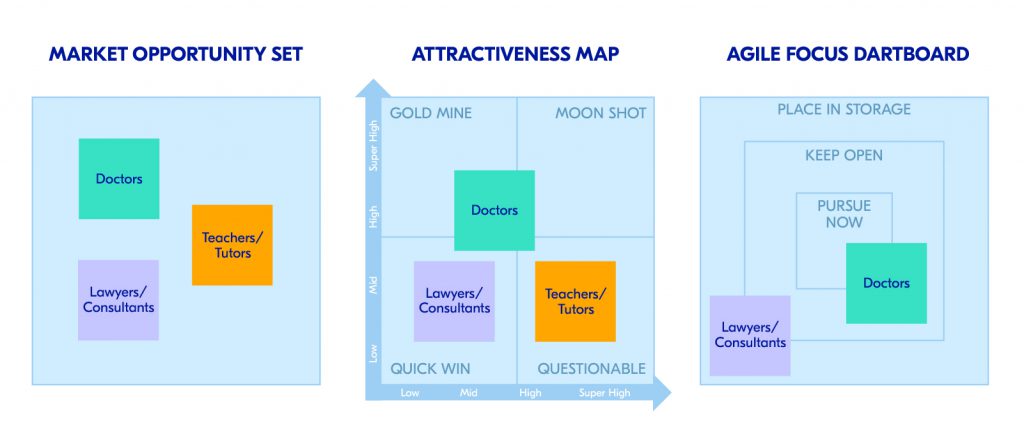
After applying this framework, a startup understands which markets are the most promising and which are better to penetrate later.
Marketing frameworks for startups
The following frameworks aim at helping a new product find its users and gain sustainable traction, market recognition, and popularity. Some of them explain how to build a product from scratch, and some can be used to improve existing products and guarantee sustainable profit growth.
AARRR Pirate Framework
The AARRR framework was offered by Dave McClure, an experienced investor who has worked with hundreds of startups. Due to the difficult pronunciation, Dave made up an alternative title for his framework – Pirate, so that people could save their nerves when mentioning the tool.
Dave saw how often newborn startups indulged in euphoria after their superficial metriсs grew rapidly. He believed that tracking metrics is vital, yet these should be actionable metrics that reflect the actual state of affairs. Dave offered a straightforward framework that repeats users’ paths during the interaction with a brand or a product. A startup should determine specific metrics representing each stage and track them religiously.
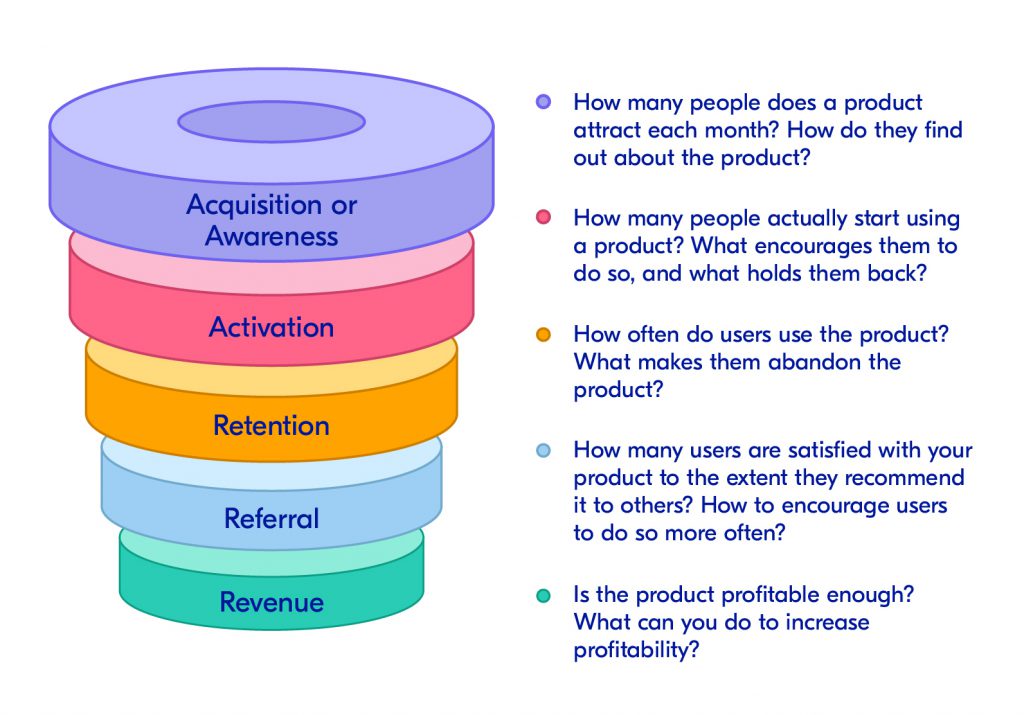
Startup Framework for Planning
Objectives and Key Results (OKR)
The Objectives and Key Results framework is a tool that Andrew Grove introduced when working for Intel. His colleague, John Doerr, attended Andrew’s management course and later passed his knowledge to Google, which he joined in 1999. The framework gained worldwide popularity after Google made it its central goal-setting framework and became a multi-billion dollar company.
To use the framework, a company should set one significant Objective and 3 to 5 complementary Key Results that make the Objective clear and measurable. It’s vital to think big and set a really ambitious yet achievable Objective that would also work as an inspiration for the team. If the Objective is 100% achieved by the deadline, it means it wasn’t ambitious enough.
The Objective should answer the question “where do I want to go?” while Key Results explain “how do we know we’re getting there?” Here’s an example:
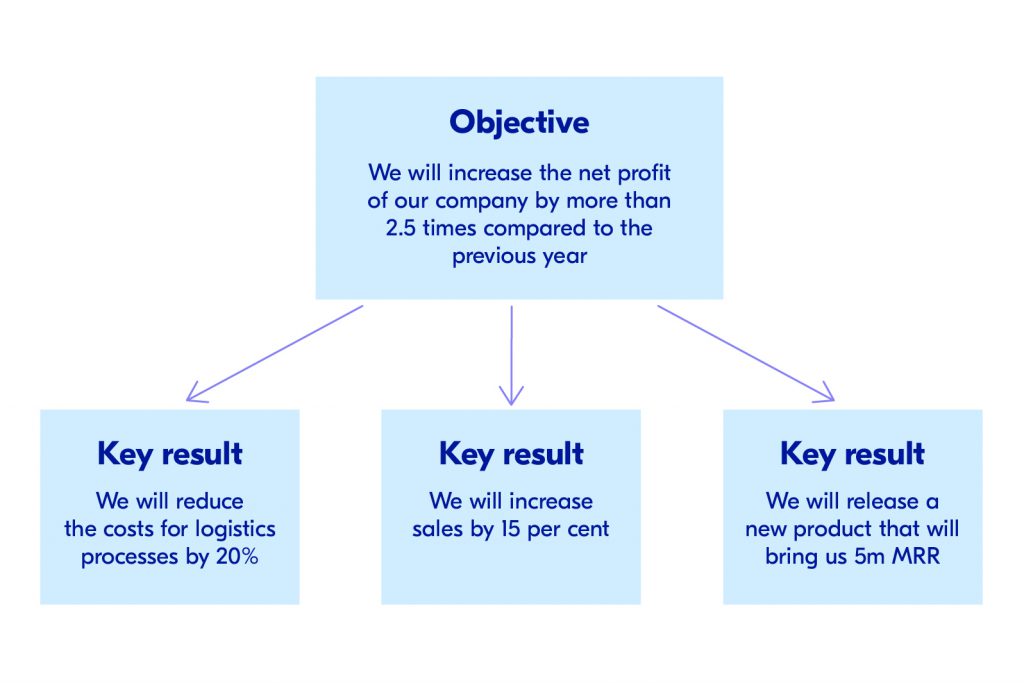
The Key Results then should be decomposed into initiatives with clear deadlines that form an actionable plan for the team.
Wrapping up
There are many other potent frameworks that help startups create, launch, and grow their products. Nevertheless, none of these frameworks can insure you against failure. Well, nothing can. But as a team that has been creating various products since 2007, we can advise you to always think before you do. Not a new idea, right? At Railsware, we don’t do a project/strategy/task before we understand why we do that, who needs it, and how we know that. These basic things save us and our client resources and guide us every step of the way.